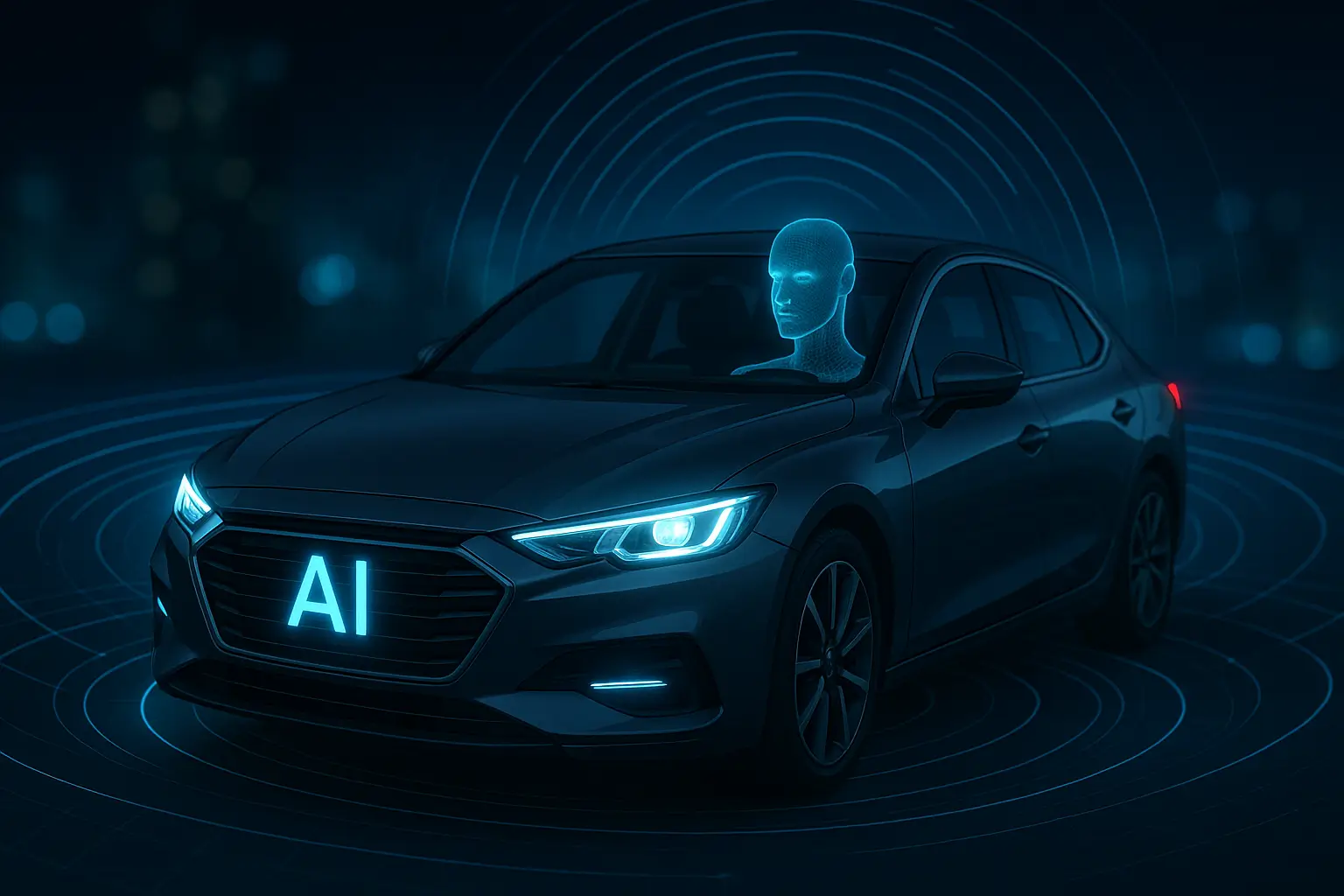Artificial Intelligence (AI) is revolutionizing the automotive industry at every level—from the way cars are designed and manufactured, to how they operate on the road. As vehicles become smarter, safer, and more autonomous, AI plays a central role in enabling this evolution. This article explores how AI is driving innovation across the automotive ecosystem and what the future of mobility looks like in an AI-powered world.
Smart Manufacturing: AI in Automotive Production
The journey of an AI-driven car begins on the factory floor. AI is optimizing automotive manufacturing processes through:
1. Predictive Maintenance
AI-powered sensors and analytics detect potential failures in equipment before they happen, minimizing downtime and reducing costs.
2. Robotics and Automation
Industrial robots powered by AI handle assembly, painting, welding, and quality inspection with precision and speed, enhancing both efficiency and safety.
3. Supply Chain Optimization
AI forecasts demand, tracks shipments, and manages inventory in real time, helping manufacturers adapt quickly to market changes and disruptions.
4. Quality Control
Computer vision systems detect defects in components and final products faster and more accurately than the human eye, ensuring high quality and reducing waste.
AI-Powered Features in Modern Vehicles
Once off the production line, AI continues to shape the vehicle’s operation and the driver’s experience.
1. Advanced Driver Assistance Systems (ADAS)
AI is the brain behind many of today’s smart car features, including:
- Adaptive cruise control
- Lane departure warning and assistance
- Automatic emergency braking
- Blind-spot detection
- Traffic sign recognition
These features help reduce human error and improve road safety.
2. Autonomous Driving
The most revolutionary application of AI in the automotive world is the development of self-driving cars. Companies like Tesla, Waymo, and NVIDIA are leading this charge.
Self-driving technology relies on a fusion of:
- Computer vision: Cameras and AI detect objects, lane markings, and traffic lights.
- Sensor integration: Lidar, radar, and ultrasonic sensors feed data to the AI.
- Machine learning: AI learns from millions of miles of driving data to make safe decisions in real time.
Levels of vehicle autonomy range from Level 1 (driver assistance) to Level 5 (fully autonomous with no human intervention).
3. Voice and Gesture Control
AI enables natural interaction with the vehicle through voice assistants like Apple CarPlay, Android Auto, or custom-built systems. Some vehicles even incorporate gesture-based controls and eye-tracking features for safer navigation and media control.
4. Personalized Driving Experience
AI analyzes driving habits, preferred routes, and climate preferences to personalize the driving environment. It can adjust seat positions, music playlists, and navigation suggestions based on user profiles.
AI in Navigation and Traffic Management
AI is improving how vehicles move within urban environments by:
- Optimizing routes using real-time traffic and weather data
- Reducing fuel consumption and emissions through efficient pathfinding
- Preventing congestion by coordinating vehicle flow through smart traffic lights and V2I (vehicle-to-infrastructure) communication
Platforms like Waze and Google Maps use AI to constantly adapt and reroute traffic, enhancing the efficiency of urban mobility.
Vehicle-to-Everything (V2X) Communication
AI supports a growing network of connected vehicles that communicate with each other and with infrastructure. V2X enables:
- Accident avoidance through shared hazard alerts
- Platoon driving for fuel-efficient highway travel
- Smart intersections that prioritize emergency vehicles or reduce idling
This connectivity lays the foundation for safer, more efficient transport systems.
AI and Electric Vehicles (EVs)
The shift toward electric mobility is also powered by AI. EV manufacturers use AI to:
- Optimize battery performance and lifespan
- Manage charging infrastructure with predictive maintenance
- Analyze driving patterns to recommend efficient charging schedules
- Improve energy recovery through regenerative braking insights
AI is critical to ensuring that EVs are sustainable, reliable, and convenient for the growing user base.
Challenges in AI-Driven Automotive Innovation
While AI offers tremendous benefits, the road to full integration is not without obstacles:
1. Safety and Reliability
Ensuring that AI systems are safe under all driving conditions—especially edge cases like heavy rain or construction zones—is a major challenge.
2. Data Privacy and Security
Modern vehicles collect massive amounts of data. Ensuring this information is stored securely and used ethically is vital.
3. Regulatory Barriers
Different countries have varying laws about autonomous vehicles. Harmonizing global standards will be essential for widespread adoption.
4. Cost and Accessibility
AI systems add cost to vehicles, potentially limiting their availability to premium models and affluent markets.
5. Public Trust
Gaining public confidence in AI-driven vehicles is crucial. Transparent testing, education, and gradual implementation will help build this trust.
Future Outlook: The AI-Driven Automotive Landscape
In the coming decade, AI will transform cars into mobile platforms for productivity, entertainment, and services. We can expect:
- Fully autonomous ride-sharing fleets
- Smart city ecosystems with integrated transport networks
- Predictive AI for vehicle maintenance and upgrades
- AI-driven insurance based on real-time driving behavior
- Sustainable design and circular economy models for automotive parts
As innovation accelerates, the line between transportation and technology will continue to blur.
Final Thoughts: AI Behind the Wheel
Artificial Intelligence is not just making cars smarter—it’s redefining the very concept of mobility. By enhancing safety, efficiency, sustainability, and user experience, AI is steering the automotive industry toward a more intelligent and connected future.
For automakers, embracing AI is no longer optional—it’s essential. For drivers, it means a new era of comfort, control, and confidence on the road. And for society, it offers a safer, cleaner, and more efficient transportation system that benefits everyone.
